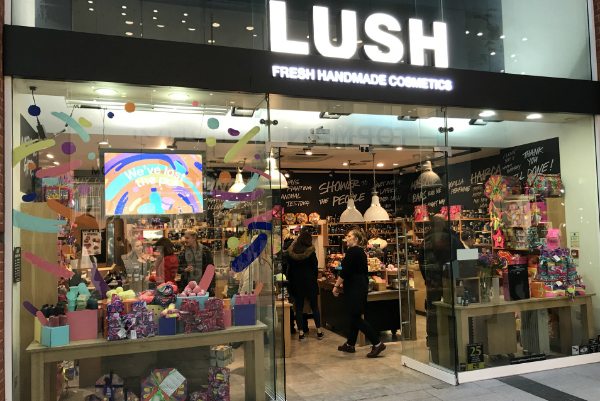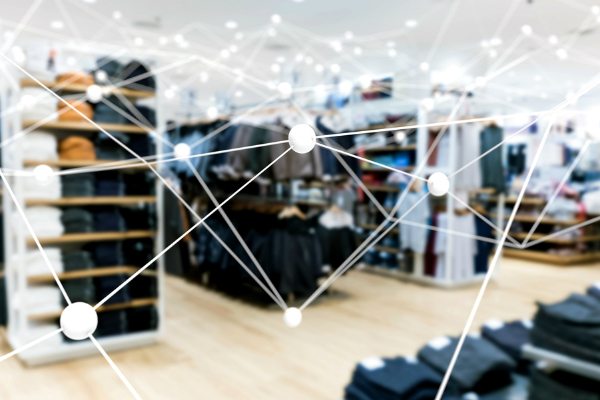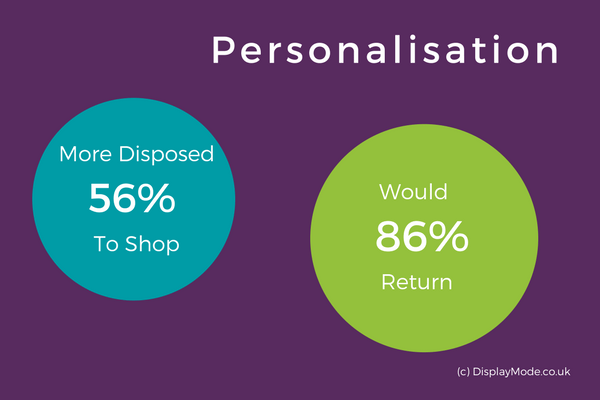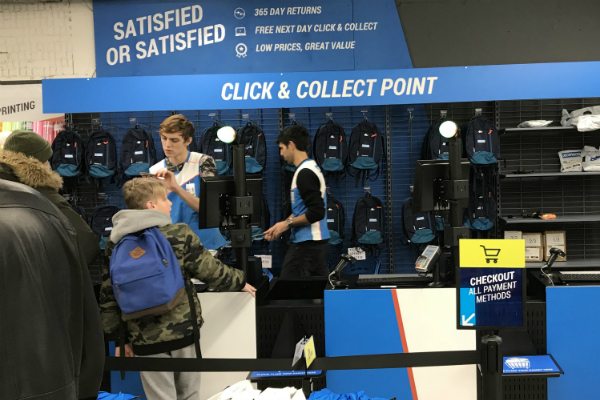Predictions for a UK 2018 Retail Landscape
For the UK retail industry, 2018 will find retailers coming up with various strategies to transform and improve their in-store relationship with customers. Retail has gone past the point of simply providing products and services to customers. To succeed in the over-crowded retail market (with shops, malls, and grocery store on virtually every street corner), retailers must fight to become the top destination for customers.
For the big players that want to maintain their position, omnichannel has long topped the list of things to implement, but with customers wanting a more personalised in-store experience and the encroachment of e-commerce stores into the physical retail market, the way these innovations will be applied in 2018 is bound to change.
With hyper-adoption, as well as hyper-abandonment, being the order of the day, being a successful retailer in 2018 will come down to how much you care about your customer’s total shopping experience. You must obtain customer-related data to provide you with deep insight on how to improve the experience when they step into your retail space while making your physical and digital touchpoints function seamlessly without giving up the best qualities of each.
Retailers must look for ways to navigate their way through the ever-changing retail landscape as well as meet the increasingly complex needs and demands of their customers. Let’s take a look at some of the predictions for the UK retail landscape in the year 2018.
The Continuous Growth of Retail
Due to strong consumer confidence in the industry, the movement towards right-sized stores and improvement in retailer activity, Savills forecasts massive growth in 2018 for the UK retail market (in spite of Brexit). However, there will be a lot of new players coming into the market to take advantage of this growth. Therefore, existing retailers would need to be innovative and highly adaptable in order to grow and beat the competition. They must be able to maximise the use of their real estate footprint while making their store networks the right size (Super large malls are no longer the order of the day).
Smaller Stores In…Large Stores Out
Talking about store sizes in 2018, less will mean more. The evolving preferences of consumers will force “big box” retailers to concentrate more on smaller-format stores in high footfall locations. The shift has already begun with brands such as Ikea, Tesla and Dyson making investments in small format stores in a bid to accommodate consumers’ preferences for more curated collections.

The major reason for this shift in shopper’s preferences has to do with a major development in the world of retail: the increasing need for accessibility and convenience. When individuals can lounge in the comfort of their homes, place their orders on e-commerce sites and online marketplaces and have the products dropped at their preferred location in a few hours, it will take the assurance of an easy and quick shopping experience to induce them into making the trip to a physical retail location.
Today’s customers no longer want to use up precious time walking through the endless aisles that are inescapable in mammoth shopping malls. They desire efficiency and easy shopping experiences provided by the more specialised selections found in smaller stores. This radical shift in buyer’s preferences also has some advantages for retailers. Opening and operating smaller-format stores cost significantly less than huge shopping malls, and they also require less real estate footprint. This is very beneficial especially in urban environments where space is at a premium. It allows retailers to get the most out of such heavily populated centres.
The Inevitability of Online Grocery Sales
Previous years saw the rapid encroachment of online stores and marketplaces into the retail sector taking with them a sizable market share. Over the years, they have continued to grow and gain more foothold, gradually taking over areas once lorded over by traditional retail stores. Studies undertaken by PWC show that globally, 28% of consumers have indicated Amazon as the reason why they shop less frequently at physical retail stores. In China, 24% indicated Tmall.com, the Chinese Amazon equivalent while in the U.S., a higher percentage (37% of consumers) have also fingered Amazon as the major reason for less frequent shopping at retail stores.
2017 saw online marketplaces making a trial run for the grocery end of the retail sales. This move was precipitated by the increase in the number of busy consumers who do not have enough time to go grocery shopping and would prefer sending their orders to online marketplaces. Current movements of global e-commerce sites show that in 2018, online grocery sales will commence in earnest. In a move to grab a chunk of the grocery industry’s market share, Lidl entered the US market, Amazon purchased Whole Foods, while Walmart and Aldi both invested heavily in the sector.
Therefore, traditional retail stores should be on the watch out for this trend and take proactive steps to ensure the loyalty and continued patronage of their customers. Even retailers that aren’t in the grocery business should watch out. As time goes on, e-commerce sites are sure to branch into other areas of the retail industry, and your sector just might be next.
The Fight for Customer Loyalty

Everyone knows that long-term customer loyalty is the cornerstone on which successful business enterprises are built on and nowhere is this truer than in the retail industry. However, recent changes have made it imperative for retailers to ensure both the emotional and transactional loyalty of their customers. You must look for ways to offer customers more value for their time, loyalty and patronage.
Amazon has perfected this with their Amazon Prime package which currently has over 80 million registered members. Registered members pay an annual “Prime” fee to get “free” shipping, photo storage, streaming media and a host of other terrific features.
Value-added services will ensure that customers keep coming back to your store over and over again.
Acceptance of A.I (Artificial Intelligence) in Retail Circles
Predictions show that retailers are set to integrate A.I as part of their in-store and overall marketing approach in the year 2018. This means that predictive analysis will be side-lined and prescriptive analysis will take over, meaning that decisions based on intuition, instinct and opinion will be swept away. Reports from Gartner show that in the year 2020, over 85% of retail customer interaction will be handled by A.I. Some retailers are already surging ahead with the implementation of A.I in different areas of their business operations.

Retailers now use A.I computing technology to take orders by mobile app, messaging, email, text and voice. Also, the experimentation with A.I-enabled in-store assistants has already commenced and has seen tremendous progress in helping customers get relevant information while shopping at a physical retail location. A.I could also help retailers avoid the huge losses caused by non-scan items and other incidents that occur at the point-of-sale. However, A.I is not likely to make a splash in the retail industry until much later in the year and may see slow implementation on the part of smaller retailers.
More Emphasis on Personalisation and Incentivised Approach
The year 2018 will see consumers expecting and demanding more personalised service. According to an interactive study by Accenture, over 56% of customers are more disposed to shopping at retail stores and online marketplaces that recognise them by name. Studies have also shown that there is a high likelihood that 86% of shoppers who receive a wonderful customer experience will become return customers. Although personalisation has been employed for some time in the retail industry, customers have become aware of the tactics used by most retailers. Some of these tactics (such as the use of first names when addressing emails and other correspondence to customers) have become transparent and outdated and need to be revamped and revitalised.

As such, retailers will be on the lookout for novel solutions to take care of this need. Nike continues to lead in this area. The athletic wear company continues to implement innovative solutions that impart a more personalised consumer shopping experience. One such instance is when they allowed their customers to customise their sneakers. However, they’ve amped up the provision of a more personalised consumer experience by developing innovative products such as the custom-lacing HyperAdapt sneakers and the inclusion of fitness videos on the Nike+ App.
Retailers can key into the personalisation trend by pushing targeted content that has been tailored to customers’ preferences (in-depth information on relevant content can be gotten from the customer’s purchase history), and the use of beacons and other location-based technology to send personalized offers direct to shoppers’ mobile devices. Furthermore, 56% of shoppers in a survey undertaken by Virtual Incentives stated that their consideration of a brand would improve if they receive a personalised incentive. Such incentives can come in the form of loyalty programs, and statistics show that over 54% of consumers (a 21% increase from 2014 figures) are willing to share their shopping preferences and personal information with retailers who offer them personalised incentives and loyalty reward programs.
This is a win-win situation for retailers since they get to increase customers’ emotional connection to their store, ensure their continuous patronage and loyalty while gaining access to personal information that can help them fine-tune their marketing campaigns and store offerings to the needs of their customers. However, converting customer’s personal data into intelligent, usable and actionable has long topped the list of challenges faced by many retailers. 39% of retailers have stated this as one of the greatest challenges they currently face. However, the new wave of digital and technological inventions and innovations will force such retailers into seeking for solutions that will solve such problems.
Continuous Investment in Omnichannel
When it comes to investment in omnichannel strategies, the future is clear; only retailers and brands who continue to improve and invest in them will succeed; retailers who do not will fail. In the race for a seamless shopping experience for their customers, there will be a massive push of omnichannel strategies worldwide. Retailers are integrating social media apps (such as Facebook Messenger) into their ordering processes while others are using Instagram for products sales and apps such as Snapchat to build a loyal following and give shoppers a behind-the-scenes look at their internal operations.

Traditionally, retailers have always recognised the advantages of paying for expensive real estate in prime locations in order to get access to higher foot traffic. They also see the benefits of creating a welcoming in-store environment for shoppers as well as the hiring of experienced staff. But when it comes to investing in digital platforms, smaller retailers have been reluctant to go all the way. They prefer sticking to free resources or those that are inexpensive.
However, retailers who try to cut corners (in 2018) on the required digital tools are going to be in for a world of hurt. Due to the ever-continuous and explosive growth and interconnectedness of digital platforms, it will get easier for shoppers to determine those retailers that are not doing enough in this category. Therefore, retailers should gear up and prepare to invest heavily in omnichannel in the year 2018.
Proliferation of AR, VR and RFID Technologies
In 2017, the concept of using RFID technology slowly gained ground in retail circles; nonetheless, it is yet to take off and reach its maximum potential. As the capabilities of omnichannel continue to evolve so also do the potential benefits of RFID implementation. In a bid to enhance customer experience, some brands have also begun experimenting with mixed reality platforms. In response to continuously shifting consumer demands and expectations, Gap and Lowe have begun the integration of VR and AR technologies into their overall strategy for providing an immersive consumer shopping experience while creating more brand awareness. By 2018, customers expect to see a more widespread adoption of these technologies in the retail industry.
Conclusion
The year 2017 has been a major challenge for businesses in the retail industry (due mostly to Brexit and its implications for the British economy). They have had to come to terms with their shortcomings and have faced great challenges in their optimisation and transformation journey. However, the experience gained and the lessons learnt during this tough period will be the stepping stone to continuous growth and advancement in 2018
[fl_builder_insert_layout id=2177]